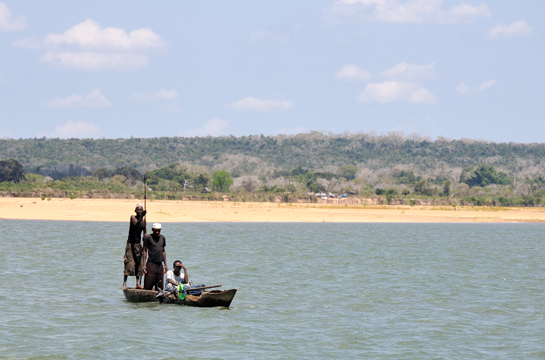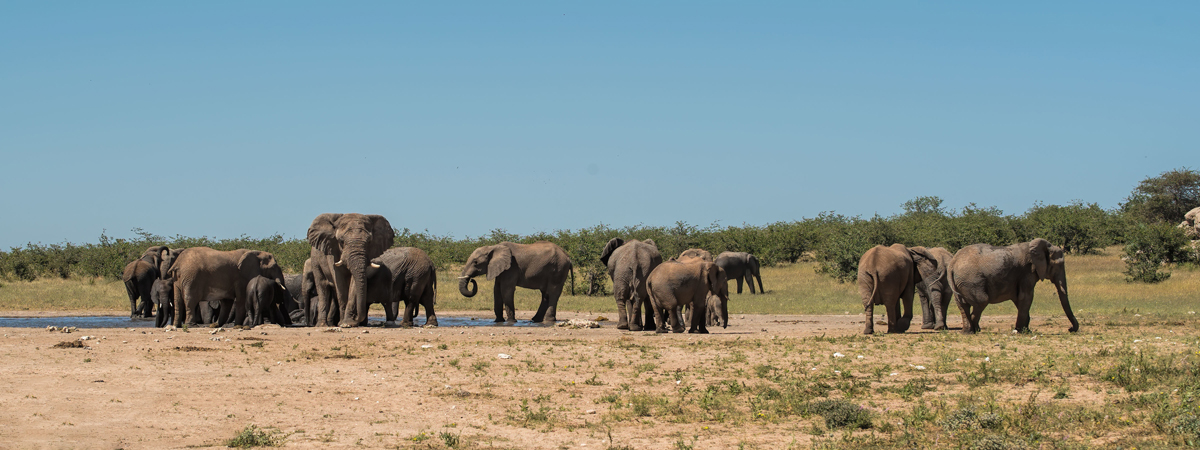Dar es Salaam to Johannesburg, via Mozambique.
That was the plan. After a short visit to Tanzania’s beguiling Selous National Park, Pat, Alex and I would drive the length of Mozambique and take a look at Gorongoza National Park.
Before the civil war, Gorongoza had been one of the premier game reserves in southern Africa, but the war had left is decimated. We’d heard it was being re-instated and were keen to see it. Along the way we would visit Ibo Island and check out a few of the beaches we had heard so many people rave about.
But before we could do any of that we had to cross from Tanzania into Mozambique
The border between Tanzania and Mozambique is, unlike many other borders in Africa, impossible to miss. It is marked by the wide expanse of the Ruvumu river.

Up until recently it would have been a straightforward matter to cross over; just drive down Mtwara and board the ferry. Except that it had sunk a couple of years earlier and never been replaced.
We knew this. We also knew that a brand new ‘Unity’ bridge had been built across the river at Negomano, around 300km to the west. Unfortunately we couldn’t find anyone who could confirm to us that it was officially open for use and we didn’t want to drive all that way, just to drive back again.
There was another option. We had heard that if you got to the Ruvumu river at Mwambo, there was some kind of makeshift local ferry that other travellers had used before. We decided that was what we would do.
Leaving Tanzania
We broke camp early and made sure we were at the Mwambo border post by 7am.
It took 2 hours of arguing and wrangling with border and customs officials before they would stamp us out of Tanzania. They repeatedly told us that either the ferry we wanted did not exist or that it was far too dangerous for them to allow foreigners to use it. They told us that if it sank, we would lose everything, including possibly our lives, and they would have to deal with the mess.
By now we weren’t really hearing any of the things they were saying to us, all that mattered was winning the argument and getting our on way.
Eventually they stamped our passports and let us through. We drove down to the river aware that we were now in no-mans land. We’d officially left Tanzania but were still in the country.
Though the wide sandy river looked beautiful, there was nothing that even vaguely resembled a ferry, let alone something that could transport a 2 ton Land Cruiser across the river.

We were soon mobbed by locals who obviously knew what we wanted, and knew that they were in a strong bargaining position.
Eventually a price was agreed and our new captain departed – we assumed to get his ferry. We waited expectantly – and anxiously – for our ferry to appear.
After about half an hour there still didn’t appear to be much happening so we tried to find out what was causing the delay.
It was low tide, we were told, and there was no way we could cross until the tide was almost full.
More people began arriving. Truckloads of sacks containing grain and rice were unloaded and stacked on the riverbank.
Eventually – finally! – we started to see some action. It didn’t inspire confidence.
One of the guys got into a small wooden boat and paddled over to where half a dozen other small boats were tied up on a sandbank. He jumped into one fo the boats and began bailing out water.

At the same time another guy approached our vehicle with a ball of twine. Using his twine he measured the length and width of our Land Cruiser.
Men started arriving with long poles which they dumped on the shore. As the pile grew, others selected poles and began lashing them together with more of the same twine.
By now 3 small wooden boats had been tied together at the riverbank and more wooden poles were being lashed down across them.

We could now clearly see the kind of transport that was being constructed for us and once again debated whether or not we would actually trust it to carry us to the other side without mishap.
Alex reached for another beer. It was his Land Cruiser.
As the water level rose steadily the sacks were moved from the shore onto boats; stacked higher and higher until water lapped at the gunwales, then people clambered on top of the sacks and the boats departed.
Our time was fast approaching. A tiny outboard motor was attached to the back of one of the three boats making up our ferry and it was taken for a test drive.

Alarmingly, the feeble motor struggled to make headway against the current, even without the extra weight of our cargo.
A crowd had gathered and people jostled for position as the time came for us to leave the safety of solid ground.
The timbers creaked and the boat lurched as Alex inched his 2 ton Cruiser up the ramps.
We climbed aboard to join him and the ropes were cast off.

The current carried us backwards as the motor coughed and spluttered into life; then slowly it began to push us through the water.
No sooner had we begun moving than men squatted down in each of the hulls with pails and began furiously bailing out water. Trying not to let this worry us too much we gazed steadfastly forwards, watching the Mozambiquan shore get ever closer.
Remarkably we made it and managed to drive off our ferry and into Mozambique without even getting the tyres wet.
Our next task was to find a customs post so we could officially enter the country.
Postscript
No sooner had we arrived in Mozambique than we met someone who told us the new ‘Unity’ bridge was open and functioning. Apparently even with the long round trip drive it would still have been quicke than building our own ferry. And a lot cheaper too, no doubt.
We’ll use the bridge next time. This time though we’ll treasure our border crossing as an unforgettable African experience.

